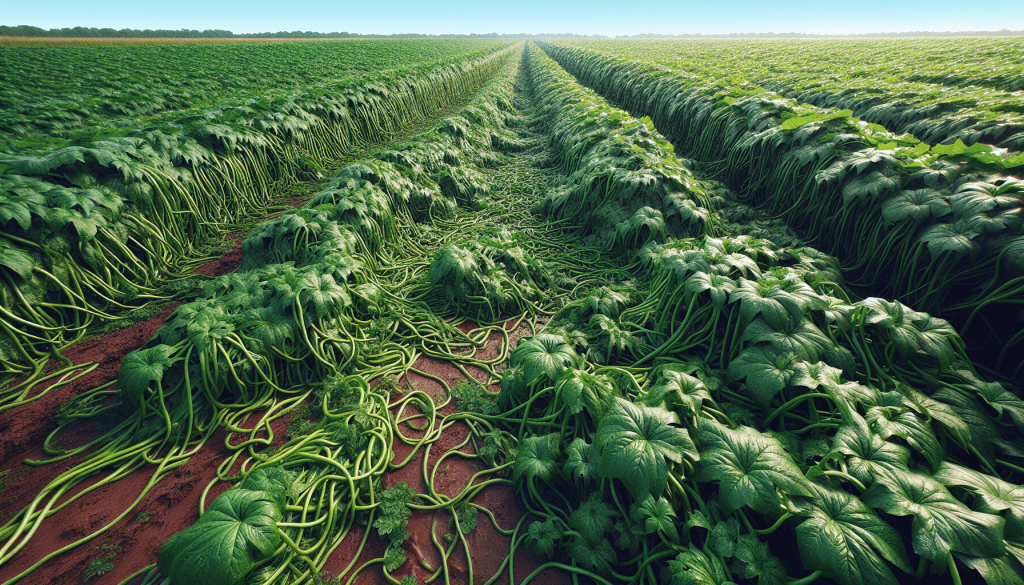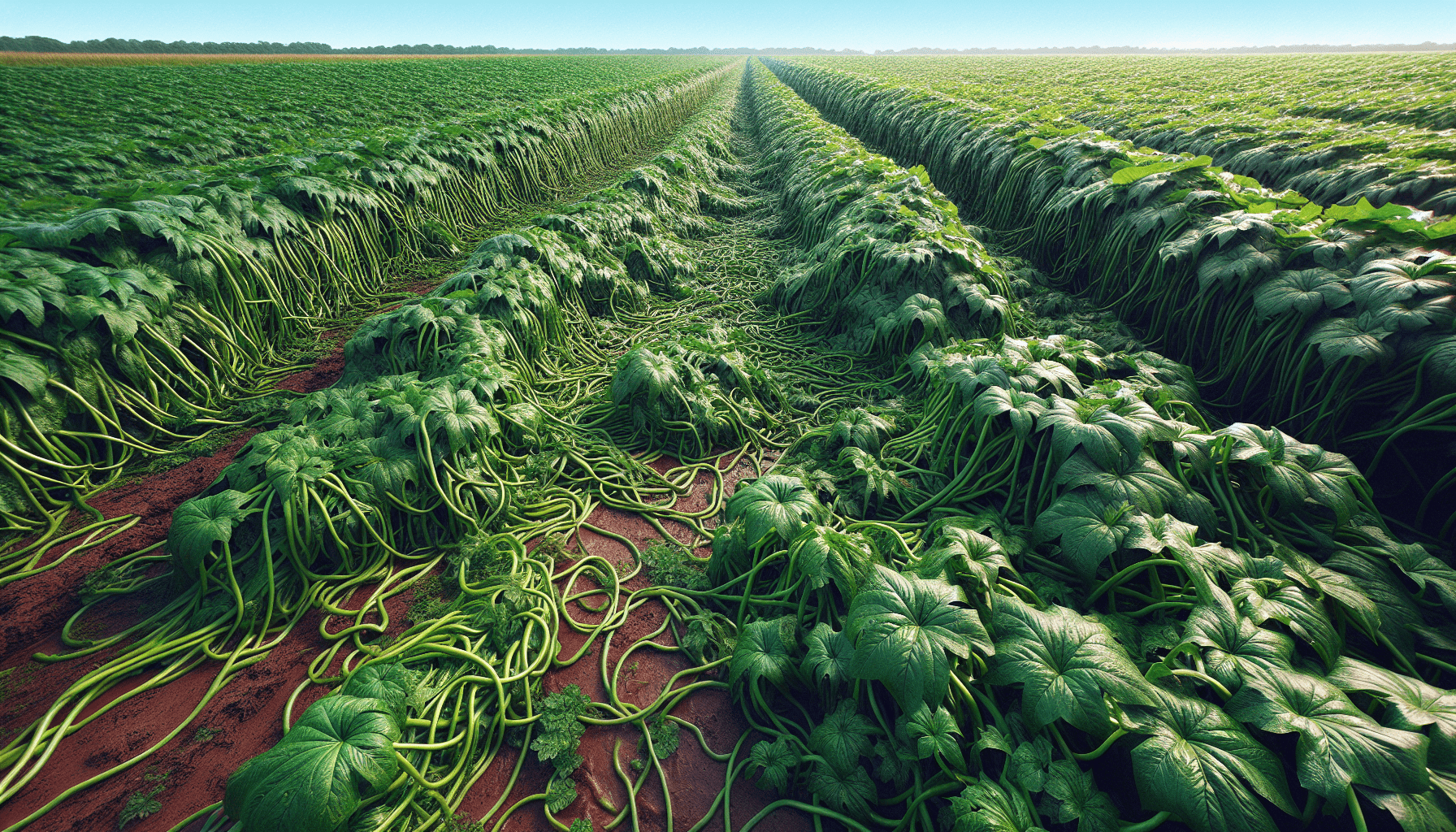In your journey to maintain a thriving agricultural environment, battling invasive species like Alligator Weed can be a daunting task. In the article titled “Expert Advice on Controlling Alligator Weed in Agricultural Areas,” you’ll find valuable insights and practical tips from field experts. These seasoned professionals share effective methods for identifying, managing, and ultimately eradicating this stubborn weed. With their guidance, you’ll be well-equipped to protect your crops and preserve the health of your land. Dive in to arm yourself with the knowledge you need to tackle Alligator Weed head-on and ensure your agricultural success. Have you ever faced the relentless invasion of alligator weed in your agricultural fields, wondering how to control it effectively? You’re not alone, and the good news is you’ve come to the right place. In this article, you’ll delve into expert advice on controlling alligator weed in agricultural areas. You’ll gain detailed, actionable insights to help you manage this stubborn weed effectively. Let’s get started!

What is Alligator Weed?
Alligator weed (Alternanthera philoxeroides) is an invasive species that originates from South America. It’s known for its rapid growth, forming dense mats on water surfaces and agricultural lands. This weed can cause significant damage to water systems, crop yields, and local ecosystems.
Identifying Alligator Weed
Before you can control alligator weed, you need to be able to identify it correctly. The plant has a few distinct characteristics:
Physical Features
- Leaves: Opposite, simple, and lance-shaped.
- Flowers: Small, white, and form in clusters on the stem.
- Stems: Hollow and creeping, often forming dense mats.
Proper identification is crucial as it ensures that control measures are directed accurately. Misidentification can lead to ineffective control strategies.
Why is Alligator Weed a Problem?
Understanding the reasons behind the issues caused by alligator weed can help you comprehend the urgency of controlling it.
Agricultural Impact
Alligator weed competes with crops for water, nutrients, and light. As it forms dense mats, it can smother crops, leading to reduced yields. This is particularly problematic for crops grown in moist environments.
Environmental Impact
The dense mats formed can disrupt local ecosystems by:
- Blocking sunlight and oxygen to aquatic life.
- Altering water flow patterns.
- Providing breeding grounds for pests and diseases.
Methods for Controlling Alligator Weed
There are several methods you can use to control alligator weed effectively. The right approach often depends on the specific circumstances of your agricultural area.
Mechanical Control
Mechanical control involves physically removing the weed from the affected area. While labor-intensive, it is often necessary for small infestations.
Methods
- Hand Pulling: Effective for small areas. Ensure to remove all roots to prevent regrowth.
- Mowing and Slashing: Useful for larger infestations but often requires follow-up treatments.
Cultural Control
Cultural control includes modifying the environment to make it less favorable for alligator weed. This method is generally more sustainable but may take longer to show results.
Techniques
- Crop Rotation: Change the types of crops grown in affected areas.
- Improving Drainage: Wet conditions favor alligator weed. Improving soil drainage can reduce its prevalence.
Chemical Control
Chemical control is often the most effective but requires careful application to avoid harming non-target species.
Herbicides
- Glyphosate: Effective but non-selective, meaning it will kill other plants as well.
- 2,4-D: More selective but can be harmful to crops.
Make sure to follow manufacturer guidelines and local regulations when using herbicides.
Biological Control
Biological control uses natural predators or pathogens to control weed growth.
Options
- Insects: Certain beetles and moths are known to feed on alligator weed.
- Pathogens: Fungal pathogens can be introduced to control the weed.
Integrated Pest Management (IPM)
A comprehensive approach often yields the best results. Integrated Pest Management (IPM) combines multiple control methods to manage alligator weed effectively.

Developing a Control Plan
To effectively manage alligator weed, you’ll need a detailed control plan. Here’s how you can develop one.
Assessment
Start by assessing the extent of the infestation. Use GPS mapping or other techniques to document affected areas. This will help you choose the most effective control methods.
Selection of Control Methods
Based on your assessment, select a combination of mechanical, cultural, chemical, and biological control methods. Ensure that the methods chosen are feasible and sustainable for your specific situation.
Implementation
Implement the control methods in a coordinated manner. For example, you might start with mechanical removal followed by chemical treatment and then introduce biological controls.
Monitoring and Evaluation
Regularly monitor the effectiveness of your control methods. Use indicators like weed density, crop yield, and environmental health to gauge success. Make adjustments as necessary.
Documentation
Keep detailed records of all activities related to weed control. This will help in evaluating the effectiveness of your control plan and provide valuable data for future efforts.
| Step | Action |
|---|---|
| Assessment | Document extent of infestation, use GPS mapping for accuracy |
| Control Method | Choose from mechanical, cultural, chemical, and biological options |
| Implementation | Coordinate the application of chosen methods |
| Monitoring | Regularly evaluate the effectiveness of control methods |
| Documentation | Keep accurate records of all control activities and their outcomes |
Challenges in Controlling Alligator Weed
Controlling alligator weed is not without its challenges. Understanding these can help you prepare better.
Resistance
Over-reliance on a single control method, like chemical herbicides, can lead to resistance. To avoid this, implement a rotation of different control methods.
Cost
Some control methods can be expensive. Mechanical removal, for example, requires significant labor, while chemical treatments can be costly over time.
Environmental Concerns
Chemical treatments can have unintended consequences on non-target species and ecosystems. Always consider the environmental impact when selecting control methods.
Compliance
Ensure that your control methods comply with local regulations. This is especially important for chemical and biological controls.

Best Practices for Effective Control
Here are some best practices to help you manage alligator weed effectively:
Early Detection and Rapid Response (EDRR)
Catch the infestation early and respond quickly. Early-stage infestation is easier and less costly to control.
Community Involvement
Engage with the local farming community. Knowledge sharing and coordinated action can significantly improve control efforts.
Research and Development
Stay updated with the latest research on alligator weed control. New methods and technologies are continually being developed and can offer more effective solutions.
Training and Education
Ensure that everyone involved is adequately trained. Proper training on identification and control methods reduces the risk of ineffective management.
Regular Monitoring
Routine checks can help you catch new infestations early. This involves regular surveys and assessments of your agricultural areas.
Case Studies: Successful Control Efforts
Case Study 1: Integrated Approach in Rice Fields
In a rice-growing region, farmers combined mechanical, chemical, and biological methods to control alligator weed. They started with mechanical removal and followed up with herbicide treatment. Finally, they introduced an insect known to feed on alligator weed. Within a year, there was a significant reduction in weed density and an increase in rice yield.
Case Study 2: Community-Led Effort
In another region, a community-led effort combining crop rotation and improved drainage significantly reduced alligator weed prevalence. Farmers worked together to implement these measures, resulting in healthier crops and improved water flow.

Conclusion
Controlling alligator weed in agricultural areas is challenging but not impossible. With the right approach, you can effectively manage this invasive species and protect your crops and local ecosystems. By combining mechanical, cultural, chemical, and biological control methods and developing a comprehensive control plan, you’ll be well-equipped to tackle this persistent problem. Remember, early detection and a coordinated effort are keys to success.
